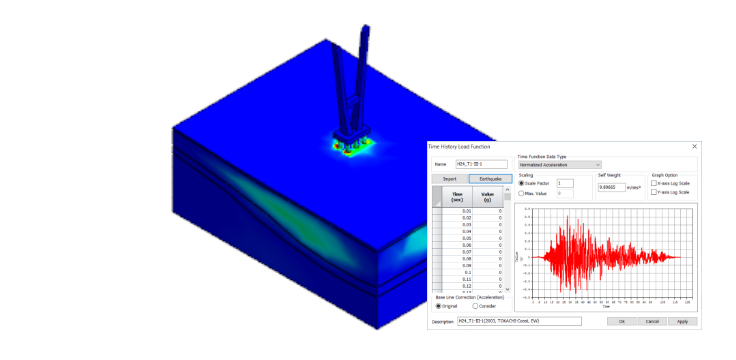

- #MIDAS GTS NX HOW TO#
- #MIDAS GTS NX UPDATE#
- #MIDAS GTS NX FULL#
- #MIDAS GTS NX SOFTWARE#
- #MIDAS GTS NX SERIES#
#MIDAS GTS NX SOFTWARE#
The intuitive interface will enable new users to easily integrate the software in their work process. GTS NX fully supports the latest 64-bit OS Graphic user interface. Result history output probes, history graphĪs the next generation geotechnical analysis software, midas GTS NX features the newest development in cutting-edge computer graphics and analysis technology. Material/property/contact thermal properties
#MIDAS GTS NX UPDATE#
Nonlinear time history/SRM - analysis case update Interface relative displacement result output request Construction stage new analysis types - Heat Transfer, Thermal Stress, Seepage-Heat Stress Both structural analysis results and seepage/heat transfer analysis results are output. Seepage-thermal stress analysis allows for hydrothermal mechanical simulation. Thermal stress and thermal deformation due to generated/exchanged heat can be obtained from thermal stress analysis (thermo-mechanical study). Thermal analysis (heat transfer, thermal stress, seepage-thermal stress) are available as the steady-state analysis and transient analysis (time-dependent).Īfter the heat transfer analysis, results such as temperature distribution, temperature gradient, and heat flow direction/size are printed. In GTS NX, thermal energy can be exchanged based on the following phenomenological ways: conduction and convention. This analysis type can be used to model the thermal changes in the ground due to environmental changes, or due to the construction of facilities, such as buildings or pipelines. The new thermal analysis module includes heat transfer, thermal stress, and seepage-thermal stress analysis types. Midas GTS NX 2019 v1.1 Initial Release: Thermal Analysis - Date: November 19, 2018
#MIDAS GTS NX FULL#
Live load 3 (F, H) -> Full and a half load on secondary beamsĭ.The MIDAS Geotechnical Engineering product team has presented maintenance release GTS NX 2019 (version 1.2), is a comprehensive finite element analysis software package that is equipped to handle the entire range of geotechnical design applications including deep foundations, excavations, complex tunnel systems, seepage analysis, consolidation analysis, embankment design, dynamic. Live load 2 (F, H) -> Full and a half load on interior main beamsĬ. Live load 1 (F, H) -> Full and a half load on boundary main beamsī. Constrains - Global boundary conditions of soil solidĪ. Meshing all beam elements of building structure (size of column element: 1.5 m, size of beam element: 2.0 m)Īnalysis: 1. Meshing other solid with the size of elements 5Ĥ. Meshing the solid that is above pads, size of elements are 2, considering interior edges (foundation piers)ģ. Meshing: 1. Size control of all foundation piers are 2 interval (1 m for each beam element)Ģ. Linear elastic material for concrete B25 and Modified Mohr-Coulomb for soil To simply later procedures, some geometry sets are generated, they are: 1. "Auto connect" (Boolean operation) to generate shared faces between solids Imprint the contours to the solid (maybe this task is unnecessary)Ĩ. Imprint the lines that are created in step 4 to the solidħ. Create lines for columns and beams of the buildingĦ. Extrude the points upward 2m to model piers of the foundationsĥ. Extrude the plane downward 18m, and upward 2m to model a solid ground massĤ. On the plane, create contours(faces) with dimension 3m x 3m (pad), 12 points in center of each pad.ģ. Create a plane dimension 24m x 48m at the depth -2.0mĢ. A pad foundation contains a pad and a pier.įor the configuration of the foundation in the above picture, the plate in model will be at the depth 2.0 m.

To answer this question, we should reconsider what a pad foundation is.
#MIDAS GTS NX HOW TO#
How to model a building with pad foundations ?

#MIDAS GTS NX SERIES#
Because I am using MIDAS GTS NX, some important points in modelling, calculating and post processing are given in the entry series ‘MIDAS GTS NX’.ġ. As I mentioned in the first entry that this blog devotes to programming in finite element analysis using MATLAB, however I also want to consider some popular software for geotechnical analysis as MIDAS GTS NX or PLAXIS.


 0 kommentar(er)
0 kommentar(er)
